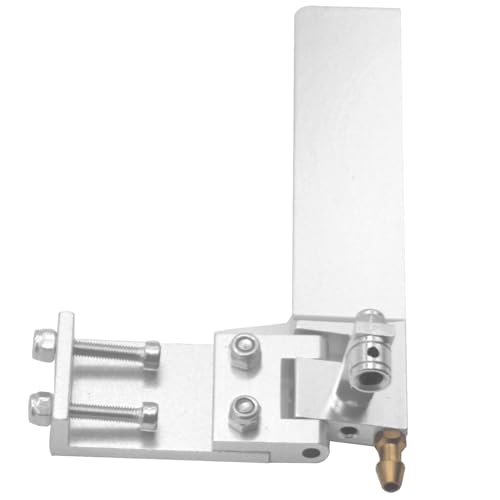Ok here goes-
Rubber mounted system, period. Here's why-
1- Solid mounts do nothing for absorbing engine vibrations, which there are alot of. There is NO SUCH THING as a "balanced" single cylinder engine. Don't let anyone tell you otherwise, it is physically impossible to do so. By nature the harmonics that develop from & during various rpm stages if not dampened will reverberate back thru the engine. Bearing failures, rod failures, cracked piston skirts, excessive wear, broken glow plug elements, broken headers, on & on.
2- Rubber mounts help isolate engine vibrations from becoming vibration harmonics in the hull itself. It is simply amazing the resonant frequencies developed in a vibrating wood or fiberglass hull. This is worse in a mono hull as it's very shape will amplify sound. I have seen a 3+ dB reduction in noise just by changing to a rubber mount. Not to mention the glue & bonding seams in any type of hull that fail when subjected to these types of harmonics, seen it too many times.
3- Solid mounts support the crankcase better? A total myth folks. These engine cases have gotten to the point that the strength of them is almost overkill in some instances. When was the last time you saw a mounting ear break off? Come to think of it, the only time I saw it happen was on a warped solid mount. A solid mount is actually worse for an engine as it does nothing to absorb the shock & torsional twisting motion of the engine. The engine will simply live longer in a properly constructed rubber isolation mount.
4- The rubber mounts get too soft & spongy. Really?? I guess I don't keep a boat long enough to see this? I've got mounts that have been in a few different boats & are still going strong plus even if you should actually wear one of these out, the isolation rubbers are readily available from places like McMaster-Carr & they're cheap. Then again I thoroughly clean the engine well areas of all my stuff when I'm done running. After the engine is flushed & oiled I have a spray bottle filled with denatured (rubbing) alcohol that I use to hose down the compartment of any oil & fuel residues. Maybe that's why I've never seen a rubber mount get "spongy"
Now there are some rubber iso mounts that are good, some not so good. My favorites are SpeedMaster & Aeromarine for standard type (4" & 5") rail spacing hulls. For outriggers the Roadrunner mount works well, but the rubber isolation grommets with 1/4" nylon mounting screws & spacers like in the Eagle SGX is my personal favorite. A nice combination of light weight & strength. The Octura "Hummdinger" mount is an example of one that's to be avoided, grossly overweight with that big underbelly plate. Would make a better bouy anchor. You don't need all that metal there folks, I actually drill out the mounting plates in some of my mounts to lighten them up & if someone will tell me how to post a pic on here I'd put one up to illustrate it. A good quality rubber isolation mount when properly installed & aligned will give years of trouble free service & help things last longer too. B)



































